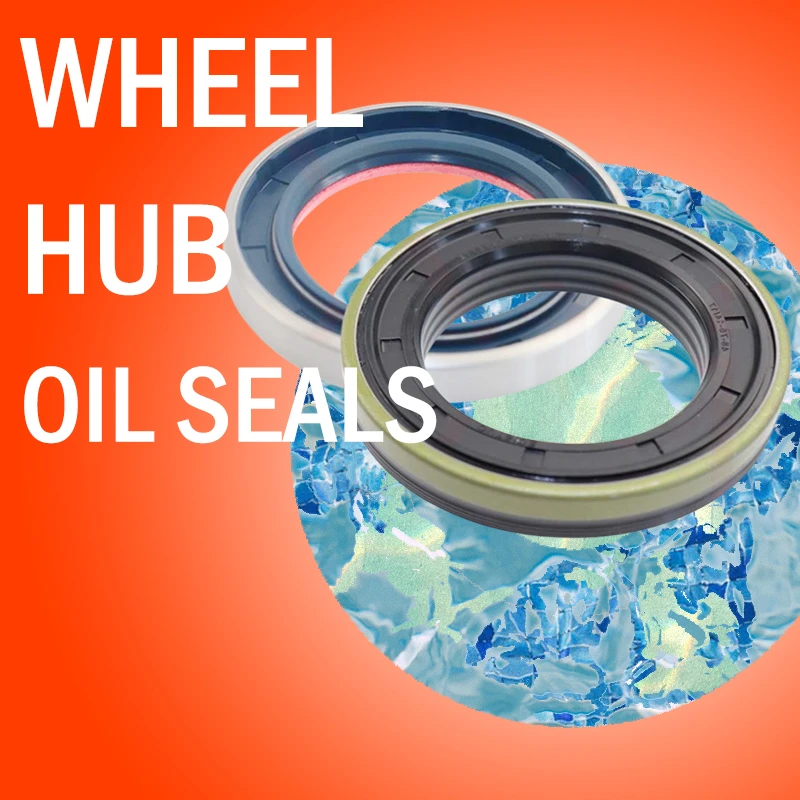Nov . 05, 2024 01:09 Back to list
wheel hub oil seal
Understanding Wheel Hub Oil Seals Importance, Types, and Installation
Wheel hub oil seals, often considered a small but crucial component of automotive design, play an essential role in maintaining vehicle performance and longevity. They serve as a barrier that prevents oil leakage from the wheel hub while also keeping contaminants such as dirt and water out. This article delves into the significance of wheel hub oil seals, the various types available in the market, and guidelines for proper installation and maintenance.
The Importance of Wheel Hub Oil Seals
The primary function of a wheel hub oil seal is to maintain the integrity of the lubricant inside the wheel bearing assembly. These seals prevent grease or oil, which is essential for lubricating bearings and minimizing friction, from spilling out. If the lubricant leaks, it can lead to premature wear and tear on the bearings and other related components. The presence of contaminants such as dirt or water can also accelerate this wear and can eventually lead to catastrophic failures in the wheel assembly.
Furthermore, the performance of the vehicle is heavily dependent on the condition of wheel bearings. A malfunction due to a faulty oil seal can cause noise, vibration, or even loss of control while driving. Hence, maintaining the integrity of the wheel hub oil seals is not just about prolonging component life but also about ensuring safety on the road.
Types of Wheel Hub Oil Seals
Wheel hub oil seals come in various types, designed for different applications and conditions. Here are some common varieties
1. Rubber Oil Seals These are standard in many vehicles due to their flexibility and durability. Rubber seals can withstand high temperatures and offer good resistance to wear and tear.
2. Metal-Rubber Combination Seals Using a combination of metal and rubber, these seals provide enhanced protection against contaminants while maintaining low friction. They are commonly used in high-performance vehicles.
3. Spring-Loaded Seals These seals include a spring that exerts pressure on the sealing lip, improving the seal's ability to resist leakage under various conditions.
4. High-Temperature Seals Specifically designed for vehicles that operate under extreme heat conditions, these seals are made from materials that resist thermal degradation.
wheel hub oil seal

5. Customized Seals Some manufacturers offer seals specifically tailored to the requirements of particular vehicle models or operating environments, ensuring optimal performance.
Installation and Maintenance of Wheel Hub Oil Seals
Proper installation is vital to the long-term effectiveness of wheel hub oil seals. Here’s a step-by-step guide to ensure correct installation
1. Preparation Before starting, ensure the workspace is clean. Remove any old seals and clean the surfaces of the wheel hub and bearing.
2. Inspection Check the wheel bearing for wear. If any deficiencies are found, replace the bearing before installing a new seal.
3. Lubrication Apply a thin layer of grease on the sealing lip of the new oil seal to facilitate easier installation and ensure a tight fit.
4. Installation Use a seal driver or appropriate tool to press the seal into place evenly. Avoid using sharp tools that might damage the sealing lip.
5. Final Check Once installed, rotate the wheel to ensure the seal is seated properly and does not create any resistance.
Routine inspections are also crucial. During regular vehicle maintenance, check the wheel hub oil seals for any signs of wear or leaks. Early detection of issues can prevent costly repairs and ensure vehicle safety.
Conclusion
Wheel hub oil seals, while often overlooked, are indispensable components that significantly influence the performance and safety of a vehicle. Understanding their importance, types, and proper installation will not only extend the lifespan of your vehicle’s wheel components but also improve overall driving safety. Whether you are a DIY enthusiast or a professional mechanic, knowing how to properly maintain and install wheel hub oil seals can lead to better vehicle performance and reliability on the road.
-
TCN Oil Seal Metal Ring Reinforcement for Heavy Machinery
NewsJul.25,2025
-
Rotary Lip Seal Spring-Loaded Design for High-Speed Applications
NewsJul.25,2025
-
Hydraulic Cylinder Seals Polyurethane Material for High-Impact Jobs
NewsJul.25,2025
-
High Pressure Oil Seal Polyurethane Coating Wear Resistance
NewsJul.25,2025
-
Dust Proof Seal Double Lip Design for Construction Equipment
NewsJul.25,2025
-
Hub Seal Polyurethane Wear Resistance in Agricultural Vehicles
NewsJul.25,2025
-
The Trans-formative Journey of Wheel Hub Oil Seals
NewsJun.06,2025
Products categories
















